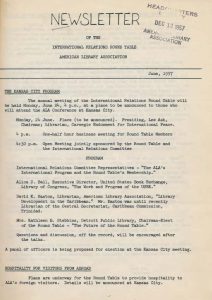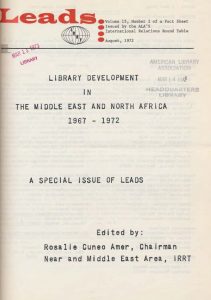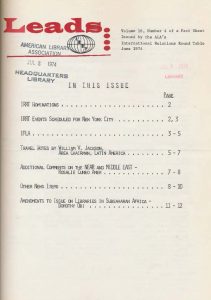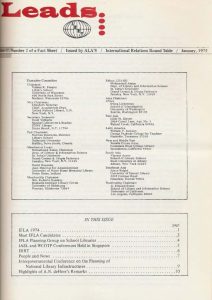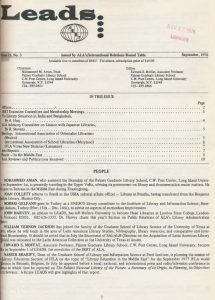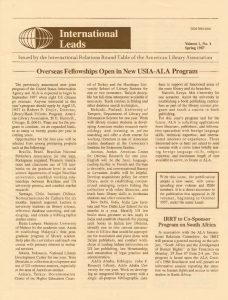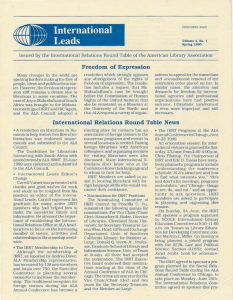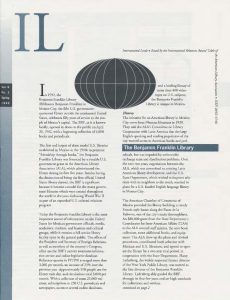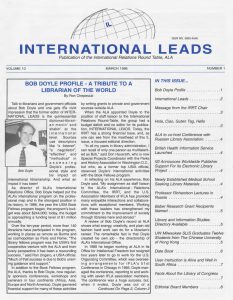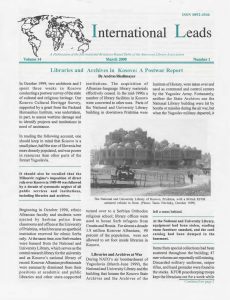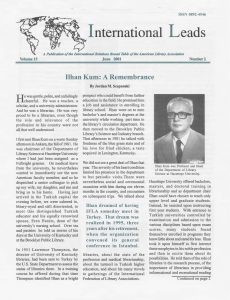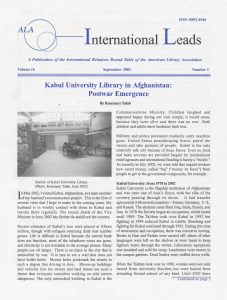Since 1987, or since October 1957 if you count its predecessor (or since April 1957 if you count the predecessor’s predecessor [or really since 1950, for that predecessor’s predecessor]), the publications of the International Relations Round Table have been documenting goodwill between librarians in the form of publications like the RTLSA Newsletter, IRRT Newsletter, Leads, and International Leads.
Read on to learn more about the early art and history of early International Relations Round Table publications (Record Series 45/2/10)!
Newsletter of Round Table on Library Service Abroad and International Relations Round Table
Following the launch of the Round Table on Library Service Abroad at the 1950 Midwinter meeting, the RTLSA produced a newsletter and the first issue provides researchers with a history of the Round Table’s establishment (pictured above). Although the A.L.A. Archives contains solely four issues of the newsletter (two issues are pictured above), from those issues researchers can read about U.S. librarian experiences in Malmo and Prague. The four issues include information about RTLSA meetings at A.L.A. conferences and announcements about librarians visiting libraries in the U.S.
By 1957, the International Relations Round Table Newsletter was known to include Round Table meeting reports as well as news about librarians visiting the U.S. In fact, the June 1957 issue (pictured above) includes a list of current members in the U.S. and abroad.
*Research tip: early professional publications often have personal contact information for professional use. Although not commonly practiced today, these older publications provide researchers with a significant amount of information no longer accessible in many cases. Sometimes, these early member lists or addresses may be the sole documentation of a professional’s work life.
Leads
By October 1957, the newsletter was replaced by a fact sheet known as “Leads”. During the 1950s and 1960s, Leads provided summary information about IRRT meetings, international librarianship publications, U.S. librarians working abroad, and librarians visiting the U.S. By this time, Leads had expanded its focus beyond reporting on U.S. librarians abroad, to include information about librarians visiting the U.S. too. Unfortunately, the listings should not be assumed comprehensive because the lists of librarians were voluntarily submitted by members. Fortunately, the IRRT worked to resolve this information gap by producing the Directory of American Librarians Who Studied or Worked Abroad, as early as 1958.
* Research tip: Leads news announcements include brief descriptions of international library exchange programs and participants, for researchers interested to know more about the diversity of librarian exchange work.
During the 1970s and 1980s, multiple issues featured reports on the status of librarianship in different regions of the world. By the middle 1970s, single author essays began to appear alongside the reports included since the 1960s. Although the length and content of Leads remained mostly consistent, (as seen in the images above), the masthead and logo had changed over time. By the late 1970s, the use of photographs in articles became standard practice.
*Research tip: although photographers are not always attributed, photographs of members are often cited in publications like Leads, sometimes providing the only means for archivists, historians, and librarians to identify unknown people in other photos. Be sure to write the names of everyone and everything in your own photos (in pencil please), before donating your images to an archives or library.
International Leads
During the spring of 1987, Leads was succeeded by International Leads, which continued all of the traditions of its predecessor. Each issue continued to include announcements of international conferences, book reviews, essays on international librarianship, and news items too. International job listings were included too. During the early 1990s, it became regular practice for essays to include photographs of the authors and essay subjects too.
* Research tip: while international librarianship often includes work in multiple languages, English language readers can access a great breadth of essays by simply reading this publication for a great variety of summaries of current events in international librarianship. The publications contained in this record series are great places to start reading about the world in libraries and libraries of the world.
During the late 1990s and through the early 2000s, International Leads continued to expand its services to members. In the masthead alone, during a ten year period, researchers can see multiple different different logos, ranging from a globe without nations to a political map of nations, to an abstract globe. As the Round Table approached sixty years of existence, researchers can continue to read detailed essays on international librarianship and Round Table members across the world. Although the early newsletters and Leads are not available online yet, researchers are invited to read the publication International Leads for themselves through the ALA Archives Institutional Repository ALAIR, available wherever in the world our readers may be.
Copies Available at Your ALA Archives
Physical copies International Leads are available for viewing at the ALA Archives; however, not all copies are available yet. Please view the Record Series 45/2/10, for information on which issues you can view locally or donate.
Got Something to Donate to the Story So Far?
There are so many great librarians doing so many great things and even the A.L.A. Archives can’t always keep-up with everyone all of the time. Not all librarians save the records of their careers and this makes preserving the heritage of international librarians and their colleagues difficult to document. Are you (or somebody you know) a member of the International Relations Round Table? Or have you been involved with international librarianship? We welcome you to share your part of ALA and library history in the comments or to contact us. We and our readers would like to hear from you.


